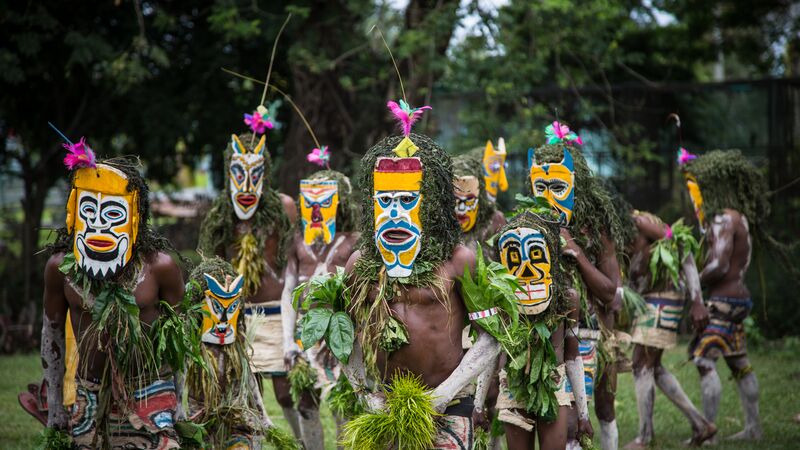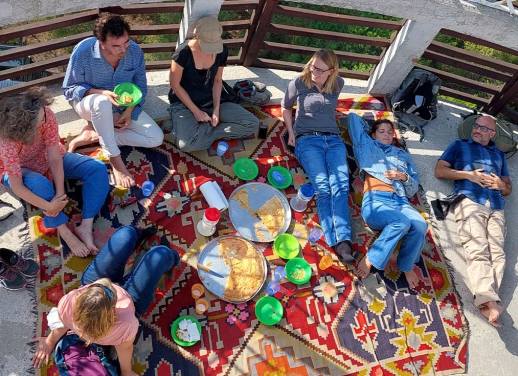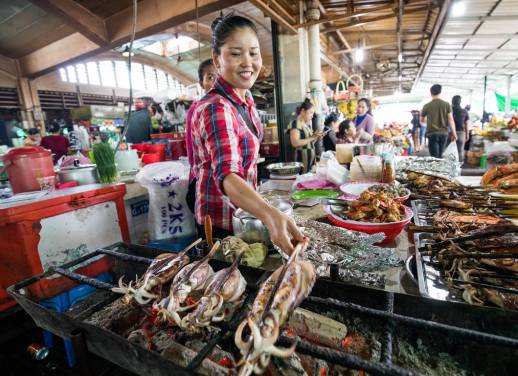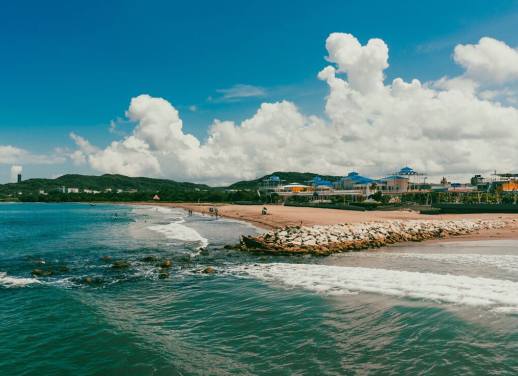When we think of festivals, we often picture trampled city streets shot through with bright streamers. We hear the rumble of drums and the hooting crowd.
We smell singed firecrackers and stale beer and tangy barbeque smoke. It’s a bit like falling in love – when you’re there, you feel like you’re the first to ever experience such dazzling jubilation. But you’re not. Many of the world’s festivals go way back to the olden days. But how much do you know about their backstories?
Halloween, Romania
Despite its Romanian associations, Halloween is in fact thought to have its roots in the ancient Celtic festival of Samhain. At the end of the summer harvest (31st October), the Celtics, believing that the spirits of the dead returned to wreak havoc, would light sacrificial bonfires and dress in animal heads to ward them off. In the 8th century Samhain merged with All Saints Day and became ‘Halloween’. Eventually the celebration found its way to America, where it evolved into a secular event designed to bring together communities and appease sugar-hungry children (and, lets be honest, adults).
So, how does Romania fit in? One word: Dracula. Although a fictional character created by Bram Stoker, Count Dracula was inspired by the real life Wallachian prince, ‘Vlad the Impaler’. (You don’t need much imagination to take a stab at his reputation). You can visit Vlad’s house in the medieval town of Sighisoara, as well as Dracula’s Castle, on our special Halloween in Transylvania departure.
Oktoberfest, Germany
Believe it or not, the original Oktoberfest actually had nothing to do with beer. As the story goes, the origins of this illustrious booze-fest date back to 1810 when Crown Prince Ludwig wedded Princess Therese of Saxony-Hildburghausen (okay, so there probably was some beer involved). To mark the occasion, Bavarian revellers gathered in the fields outside Munich and made merry watching horse races. So much fun was had that everyone decided to do it all again the following year, and Oktoberfest was born. These days, it is beer rather than horses that brings over six million people to Bavaria each year to celebrate. Prost!
Fiesta de la Candaleria, Peru
While you may not have heard of this one, every Peruvian under the sun has. Back in the 1700s, Spanish-ruled Puno was under imminent attack from Tupac Amaru’s Incan army. Greatly out-numbered, the locals turned to their faith, parading a statue of the Virgen de la Candelaria down the streets. The attackers fled that night, and the Virgen was given credit.
Combining Quechua, Aymara and Andean traditions, the Fiesta de la Candelaria is held in her honour in Puno every February and is the biggest, brightest and beeriest Peruvian festival of them all. The celebration’s central dance, the ‘Diablada’, is a dramatization of the legendary fight between the devil and the archangel Michael. Who wins? Find out for yourself on our Virgen de La Candelaria Festival trip.
La Tomatina, Spain
It’s only fitting that the world’s biggest food fight has messy origins. Prevailing theory has it that La Tomatina kicked off in 1945 when a rowdy group of youngsters knocked over a giant paper mache parade figure. A fight broke out among the crowd as a result and, somehow, unsuspecting tomatoes from a nearby fruit-stand got involved. The following year, the kids returned to resume the battle…and so a tradition began.
Due to its lack of religious significance, the festival was shut down during the reign of the infamous party-pooper, Franco. By the 70s however, things were back in full fruit-flinging swing and today tens of thousands vie for the 20,000 tickets on offer each year.
Mardi Gras, USA
Mardi Gras basically commemorates Christian families stuffing themselves with as much meat, cheese and fattiness as possible in the days preceding Lent. Originally coined Mardi Gras (or ‘Fat Tuesday’) by the French, Mardi Gras came to the US of A in 1699 when French settlers in Louisiana celebrated with masked balls, street parties and torch-lit processions. 157 years later, six locals formed the ‘Mistick Krewe of Comus’ – the first of the carnival’s famous ‘krewes’.
While the Comus boys would probably be a little surprised by the crowds and commercialism of today’s Mardi Gras, plenty of timeless customs remain, including the throwing of beads, wearing of masks, eating of King Cake and general having of wild, extravagant fun.
Harbin International Ice and Snow Sculpture Festival, China
This annual month-long exhibition of the world’s biggest and most intricate frozen sculptures owes its beginnings to the humble ice lantern. During long, dark winters, resourceful farmers and fisherman along the Songhua River took to creating their own light sources by partially freezing water in a bucket. After removing the ice from the mould, they’d chisel a hole in the top, drop in an oil lamp…and voila! Let there be light. Ingenious, right? People used the lanterns to decorate their festivals and, over time, they became an integral part of Harbin’s cultural traditions. In 1985, the inaugural Harbin Ice Festival was held to help boost tourism to the area. It now features the work of both Chinese and international artists and attracts hundreds of thousands of tourists each year.
Check out our range of new trips for 2025 here.
Feature photo by Mike Geisel.




